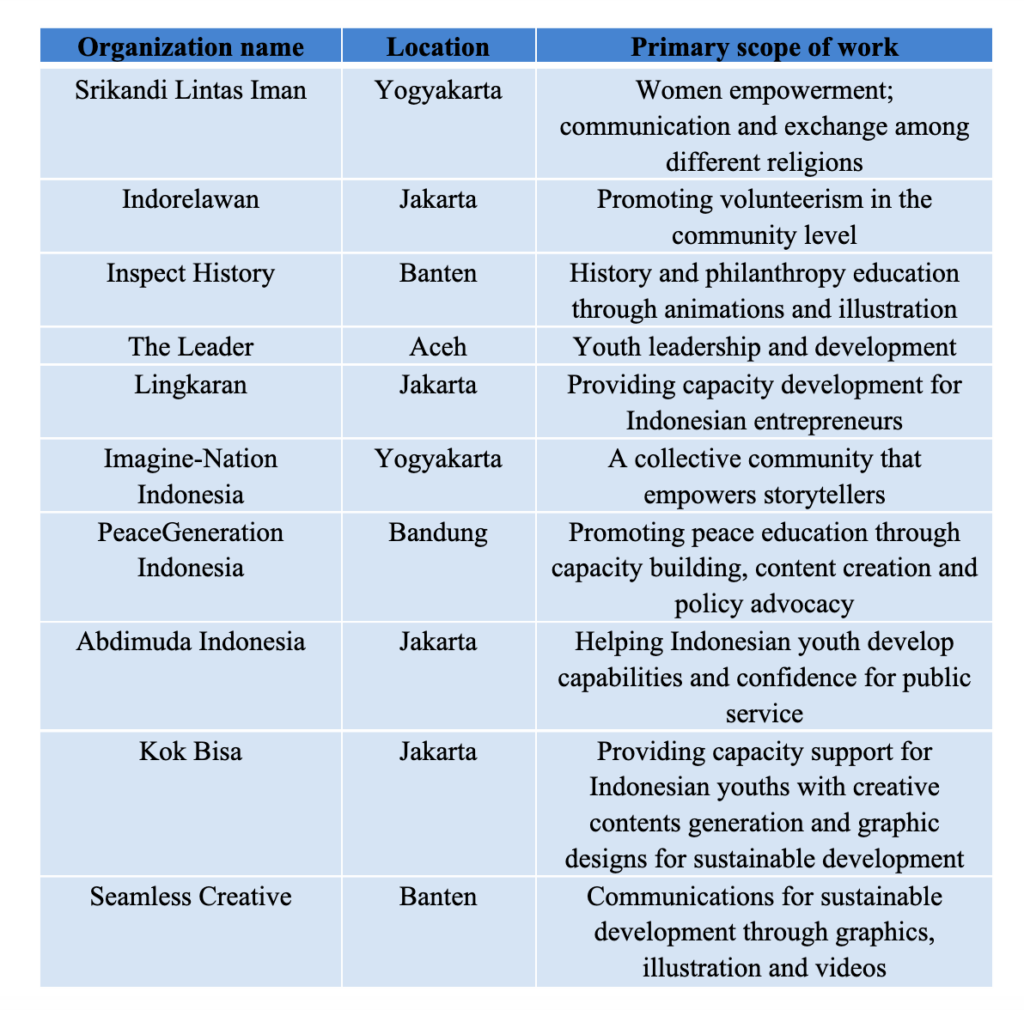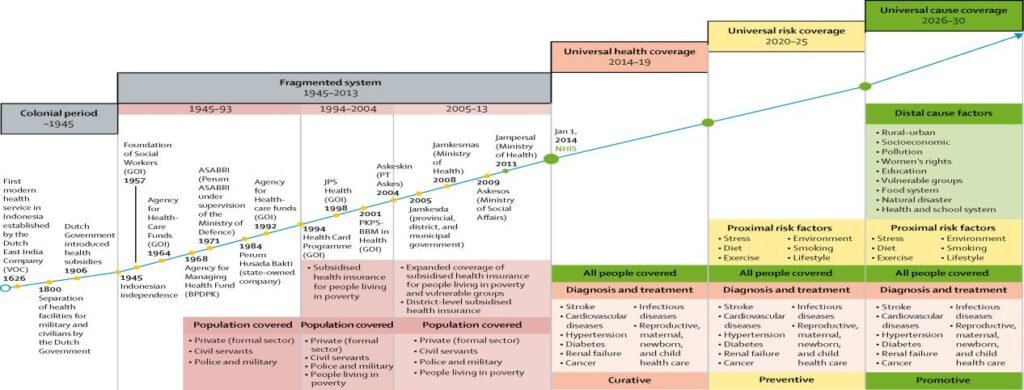By Bolun
This is a Diinsider original article that discusses how businesses can promote sustainability in Indonesia, covering a wide range of topics such as quality education, youth development, healthcare, climate change, biodiversity, and sustainable finance. This piece is the first half of the article.
1. The Vision of Achieving Quality Education
Indonesia has a relatively high rate of elementary education enrollment, yet with visible gaps in education accessibility among diverse ethnicities and geographical locations. In the meantime, the education system and tools in Indonesia still remain traditional. The Indonesian government make efforts to address the challenges and increased the national education budget by 30% for the last 5 years, hoping to provide quality education for the Indonesian next generation.
Table 1: Secondary education enrollment rate

Table produced by Diinsider; data source: Oxford Business Group
With more than 17,000 islands and infrastructure that needs more improvement, Indonesia is yet to satisfy the need for quality education for all students nationwide. This provides excellent opportunities for the development of online education. Currently over 400 online education platforms operate within Indonesia, which have become essential forces to bridge the gap in education resources and infrastructure. One of the most popular online education platforms is Ruangguru, which currently has over 15 million online students and over 300,000 tutors. Students can watch online learning materials and interact with tutors easily. In the meantime, the geographical distribution of online education in Indonesia is still quite unequal, with over 55% of online education platforms operating in Jakarta. On the other hand, students in the eastern provinces of Indonesia are less likely to benefit from online resources. Businesses can consider helping domestic online education platforms expand their reach and services to more remote regions, through supporting philanthropic activities or impact investing.
In terms of higher education, diverse types of higher education institutions exist in Indonesia, including academies, polytechnics, schools of higher learning, institutes, and universities. Among these institutions academies and polytechnics mainly provide vocational education programs (polytechnics have more subjects available than academies), and schools of higher education, institutes, and universities mainly provide academic education programs (universities have the most subjects, and schools of higher education have the least). Currently, the exact numbers of each category of higher education institutions can be found below.
Figure 1: Type and number of higher education institutions in Indonesia

Figure produced by Diinsider; data source: Ministry of Research, Technology, and Higher Education
The Indonesian government makes it an important agenda to build a vocational training system and plans to establish 500 vocational training centers by 2024. The country also values the role of the private sector and strives to provide convenience for businesses to participate in vocational training programs.
Figure 2: Targets of the Indonesia government to build vocational training centers

Figure produced by Diinsider; data source: Oxford Business Group
In addition, it is getting more and more acknowledged that skills development for the younger generation should cope with future needs and focus more on the capabilities to solve complex issues. These skills include but are not limited to digital skills, critical thinking, teamwork, and communication. However, there have been a number of bottlenecks that constrain the development of such skills for youths in scale. Lack of monetary investment, lack of credible information, lack of investment in capacity building for teachers, constraints of a traditional evaluation system, and lack of career development opportunities are among the key factors that prevent Indonesia from building future skills for its younger generation. As a result, huge space exists for businesses especially tech companies and new businesses, as they have the actual need for hiring high-quality employees. These businesses can provide resources and practical positions for youths to develop future skills, and it will in turn benefit the businesses themselves.
2. Supporting Youth-led Small and Medium Enterprises
Indonesia has around 65 million young people between 10 and 24 years old. Out of all 61.3% are in the employment market and the unemployment rate is as high as 15.2%. As unemployment is still an issue, innovation, and entrepreneurship becomes a solution for talented young people to explore. So far 20% of Indonesian youths receive employment through entrepreneurship activities, making up one of the major sources of employment. For businesses, supporting entrepreneurship is a great strategy for corporate citizenship and social responsibility, and in the meantime with high potential for business opportunities. Currently, youth-led enterprises in Indonesia are mostly very small, focusing on traditional industries such as retail, agriculture and fishery, restaurant, and hotel. However, there are also emerging youth-led companies in the technology or sustainability sector that become quite successful. It is worthwhile noting that women entrepreneurs only make up less than 40% of all young entrepreneurs in Indonesia, making the gender gap a factor to pay attention to.
Figure 3: Sector distribution of Indonesia youth-led enterprises

Figure produced by Diinsider; data source: Sakernas
Table 2:Size and type of Indonesia youth-led enterprises

Table produced by Diinsider; data source: Indonesia Central Statistical Bureau, 2020
At this moment in Indonesia, the supporting system for youth entrepreneurship is still not mature and efforts are in the beginning phase. Major stakeholders in this race include governments, domestic and international companies, international organizations, as well as civil society organizations. Among all the stakeholders, several programs are already established, such as the Indika Foundation established by Indonesian energy company Indika, Youth Co: Lab program led by UNDP and Citi Foundation, the domestic impact investing network ANGIN, as well as social innovation incubation space, The Local Enablers. These programs have supported various youth-led enterprises. Below is an example of Indika Foundation-supported programs.
Table 3: Examples of Indika-supported youth-led enterprises in Indonesia

Table produced by Diinsider; data source: Indika Foundation
Apart from Indika Foundation, the Tanoto Foundation by Indonesian entrepreneur Sukanto Tanoto is also an important player. Together with ANGIN, Tanoto Foundation established Tanoto Future Leaders Business Acumen Program, to provide one-stop supporting platform for Indonesian young entrepreneurs. The program helps young entrepreneurs to polish business ideas, expand networks and get funding support. There is no doubt, that investing in the creative minds and concrete actions of the Indonesian next generation has become a rising consensus among business leaders operating in the country
3. Increasing Investments in Healthcare
There are 2813 hospitals in Indonesia and 63.5% of them are private hospitals. The whole country has around 300,000 hospital beds, or alternatively 0.9 beds per 1000 people. There is only around 0.2 doctor per 1000 people. In addition, there are 9718 community health centers (Puskesmas) authorized by the Ministry of Health nationwide. Medical practice in Indonesia includes both modern practice and traditional practices.
In recent years, Indonesia has seen rapid development in healthcare. Government expenditure has increased steadily over the past years and currently health expenditure accounts for around 3.1% of total GDP. However, government expenditure can only cover less than 40% of all health costs for the whole population, leaving a huge burden on Indonesian citizens. After decades of development in the healthcare system based on healthcare provision for public servants, poor people, and vulnerable groups, Indonesia proposed in 2014 the goal of universal health coverage, aiming to provide inclusive health services for all citizens with all the health burdens and costs covered. This is an ambitious yet meaningful goal. Furthermore, Indonesia wishes to achieve universal risk coverage by 2025, taking environmental health, mental health, and dietary risks into consideration. By 2030, Indonesia aims to incorporate gender equality, education factors, and other human rights factors into health services provided to achieve universal cause coverage.
Figure 4: Process of Universal Health Coverage in Indonesia

Source: The Lancet
Health inequality is a major challenge in Indonesian society. The health gaps among different provinces are still remarkable, with indicators such as healthy life expectancy and the density of health workers in Eastern Indonesia being far behind Western Indonesia. As government expenditure is not enough, private-sector investment becomes essential in healthcare improvement in the country.
Figure 5: Healthy Life Expectancy of different provinces in Indonesia (HALE)

Source: The Lancet
In the healthcare sector, the private sector in Indonesia has been carrying out a wide range of sustainable investment activities, including investing to improve the capacity to cope with future pandemics in the health system, modernization of hospitals, combating early childhood stunting, and promoting indigenous medicine practice. For businesses to consider sustainability investment, the health sector is very attractive as the work is quite visible with a high level of public interest, thus worthwhile exploring to establish more valuable programs.
(To be continued)
Reference
Yodi M, Laksono T, et al (2017). The Republic of Indonesia Health System Review. Health Systems in Transition Vol. 7 No. 1 2017
UNDP, IsDB, Citi Foundation, et al (2020). The State of the Ecosystem for Youth Entrepreneurship in Indonesia.
PwC (2023). Investment in the Indonesian university sector: a regulatory overview for foreign universities.
Chrisanty V, Sasmoko *, Mohammad H and Lim S (2022). A Portrait of Socially Responsible Hospitals in Indonesia. Sustainability 2022, 14, 3437. https://doi.org/10.3390/su14063437.
Lee Kuan Yew School of Public Policy, Microsoft (2016). Technical and Vocational Education and Training in Indonesia: Challenges and Opportunities for the Future
Divya N, Shrochis K, et al (2019). Study on skills for the future in Indonesia. Oxford Policy Management.
China Chamber of Commerce in Indonesia (2022). Berbagi Nasib, Berbagi Masa Depan Bergandeng Tangan, Melangkah, Bersama.

